Angela Ackerman's Blog: Writers Helping Writers, page 157
July 1, 2014
Cookies and Layers
Well, it’s summertime (as you know), and I’m having a blast with my two littles. Which is, of course, what summer is all about. As I’m sure you also know, summer is also about cookies. Oh yes, indeedy, it is. And since summer is also about sharing (who knew summer was so awesome?), I’m sharing my favorite 7-Layer Cookie recipe below, followed by a popular post from the past. Originally, I published this post in the fall, when I made a connection between cooking soup and adding layers to a story. But it’s too freaking hot for soup. Hence the cookies. Enjoy!

Image Courtesy of Meal Makeover Moms @ Creative Commons
Ingredients:
1/2 cup margarine
1 cup graham cracker crumbs
1 cup flaked coconut
8 ounces peanut butter bits (some people use butterscotch bits, but I prefer peanut butter)
8 ounces chocolate chips
1/2 cup chopped nuts
1 can sweetened condensed milk
Directions: Melt margarine and put in a 13×9 pan. Sprinkle graham cracker crumbs over the margarine. Continue with the rest of the ingredients, sprinkling them one layer at a time, and finishing with the milk. Bake at 350º for 20-25 minutes.
So…what does this recipe have to do with writing a story? Well, the first draft of a story is usually pretty plain, like the graham cracker crust on this cookie. But once you start revising, you add the layers that flesh out the story and make it thicker, three-dimensional. There are a lot of things you could add to achieve this goal. Here are a few on my current revision list…
1. Subplots. These secondary plot lines add complexity and girth and are almost always directly tied-in to the main plot line. A romance that complicates the main character’s objective (The Hunger Games); a mystery that is solved at a pivotal point in the story (Saving Private Ryan); a friendship that spurs the mc on in her quest to reach her goal (Wither). Each subplot should have its own complete and smooth story arc. Keep this in mind when editing.
2. Theme. Some writers start with theme. Others figure it out along the way. Still others have the entire first draft done before they realize what the theme is (hello, me). However you do it, it’s crucial to at some point identify your story’s main theme so you can touch on it from start to finish. Think of your theme as a secondary subplot, one that needs a full arc from beginning to end. Revisit it frequently to add depth.
3. Character Renovations. Without fail, I get all the way through my first draft and realize that my main character is missing something. I hate that. But that’s what the revision process is for, no? To increase depth, add an endearing quirk, uncommon trait, or a fatal flaw to be overcome. For maximum impact, make the trait one that either helps or hinders the character’s ability to achieve his or her overall goal. For more information on fleshing out characters, definitely check out The Negative Trait Thesaurus and The Positive Trait Thesaurus on our Bookstore page.
4. Meaningful Repetitions. These include anything that is repeated throughout the story and, ideally, grows or changes with the story. Symbols and metaphors are good examples. Common phrases or sayings. Meaningful objects. Settings also apply: a favorite hang-out, the place your character goes when she needs downtime, a location that has specific significance or emotional importance. These repeated pieces are like touchstones for the reader, connecting them with the characters and embedding the reader more firmly into the story with each repetition.
What have I missed? What are some areas you like to focus on when adding layers to a story during the revision process?
The post Cookies and Layers appeared first on WRITERS HELPING WRITERS.
June 28, 2014
Character Talents & Skills: Telling Lies
As writers, we want to make our characters as unique and interesting as possible. One way to do this is to give your character a special skill or talent that sets him apart from other people. This might be something small, like having a green thumb or being good with animals, to a larger and more competitive talent like stock car racing or being an award-winning film producer.
When choosing a talent or skill, think about the personality of your character, his range of experiences and who his role models might have been. Some talents might be genetically imparted while others are created through exposure (such as a character talented at fixing watches from growing up in his father’s watch shop) or grow out of interest (archery, wakeboarding, or magic). Don’t be afraid to be creative and make sure the skill or talent is something that works with the scope of the story.
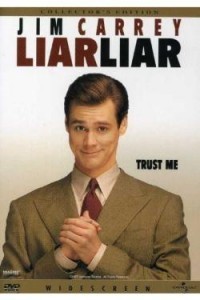
Description: being able to convince others that one is trustworthy and knowledgeable even when one does not have facts, evidence or intimate details of the situation is a well-honed skill. Like having a silver tongue, being able to articulate one’s viewpoint is incredibly important. However, a liar will purposefully skew facts or tell falsehoods in order to further one’s own agenda.
Beneficial Strengths or Abilities: having control over one’s emotions, being very aware of body language and what it conveys, always thinking before acting, having an innocent or trustworthy expression, being able to mask certain “tells” that go along with lying (fidgeting, changing the topic, rushed speech, deflecting and denial, etc.)
Character Traits Suited for this Skill or Talent: Manipulative, Observant, Evasive, Charming, Controlled, Confident, Rational, Courteous, Crafty, Persuasive, Intelligent, Quick-Witted
Required Resources and Training: To become an adept liar, a person must learn how to exude confidence, keep a calm demeanor, and speak in a way that appeals to the target’s emotional sensitivities. Observing others to understand body language and how to read their emotions is necessary as most communication is non-verbal. Through watchfulness and asking careful questions, a liar can become adept at determining a mark’s emotional state, allowing him to manipulate the person better. Because lies often contain a bit of truth, understanding the basics of a situation and the people involved is a must to be able to manipulate information and tell convincing lie.
Associated Stereotypes and Perceptions:
That all politicians are liars
Criminals will lie to anyone about anything
Telling a white lie to save someone from hurt is acceptable
Parents tell small lies to children to avoid having to explain things they don’t want to or to avoid debates
Scenarios Where this Skill Might be Useful:
Talking one’s way out of a tight spot (feigning ignorance or lying to diffuse a volatile situation)
To win a much-needed reprieve (being able to hand in an assignment late)
To gain an advantage (to have more time to prepare, to study, or to gather facts)
To take advantage of an opportunity (calling in sick so one can hang out with a visiting friend)
Resources for Further Information:
Resources for Further Information:
Spotlight on Subtext: When Characters Are Liars
You can brainstorm other possible Skills and Talents your characters might have by checking out our FULL LIST of this Thesaurus Collection. And for more descriptive help for Setting, Symbolism, Character Traits, Physical Attributes, Emotions, Weather and more, check out our Thesaurus Collections page.
The post Character Talents & Skills: Telling Lies appeared first on WRITERS HELPING WRITERS.
June 26, 2014
5 Surprising Ways Regret Can Deepen Your Hero’s Arc
Super pleased to welcome Writing Coach MJ Bush today. I am a huge fan of her blog, Writing Geekery…if you don’t yet have this site on your writing resource roster, make it happen! (Trust me, you don’t want to miss any of her articles because they contain unique and valuable insight into character arc and story structure.)
MJ’s tackling REGRET, which is key to a well developed character arc. Regret can destroy a person, but it can also motivate, spurring a character to take action when they reach the point where fears, missed opportunities and poor choices lead to unbearable fulfillment and dissatisfaction. Great stuff here on how to use it in your hero’s arc, so please read on!
Regret is a hard motive to wrangle. Shallowness creeps in because actions seem simplistic or pasted on if you don’t establish realism and reader empathy.
Even if your reader wouldn’t be able to tell you exactly why it doesn’t seem realistic now, they’ll know realism when you use it.
And boy, can you use regret to change your character’s life in interesting ways. PLUS I’ve got some tips on creating emotional realism. Read to the end for my gift, a free report on arcs born from regret.
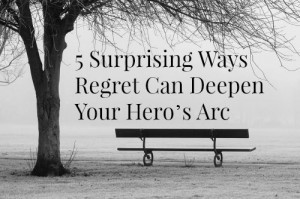 First, let’s clarify what regret is.
First, let’s clarify what regret is.
It’s an indirect motivator. For example, it can fuel a desire to right wrongs, or a fear that the same thing will happen again.
It’s grieving for what could have been. Even if there was nothing you could have done.
But it also encompasses guilt, remorse, and contrition.
Basic regret is wishing things could have been another way, guilt is blaming yourself, remorse is wishing to make amends, and contrition is acting to make amends.
So, let’s look at five realistic ways regret can affect your character.
1. Looking Ahead Too Intently
Anticipated regret is stronger than the regret itself.
Your character might be disproportionately afraid of missing out, and realize later that it wasn’t so bad. The arc from fear to relief is an especially great option for supporting characters.
►► Avery had a ticket to leave on the next ship out, headed for one of the newly terraformed colonies, but he cut it too close and he can’t get everything ready in time. He transfered to a later launch, had more time to say goodbye, and realized that it was ultimately a good experience.
2. But It’s Not the Same!
This one applies when your character has missed an opportunity. The psychological phenomenon is called inaction inertia. One missed opportunity increases the likelihood of missing another, wishing it was as good as the first.
So make sure your character has a good strong push to take a second opportunity. Or let them pass up the second only to realize that they will really regret it if they miss a third.
…If you want them to take it.
►► Avery landed on his new planetary home and immediately found a great house, but decided to check out the possibilities. Nothing compared, but when he went back, it’d been sold. Later that week, he found another great place but he decided that the first house was his dream home and this other house just wouldn’t cut it.
Desperate after realizing that he should have taken it, he gave up and took the next livable place.
3. The Growth of Resilience (or Not)
Regrets can cause a distorted self-concept, the past reflecting on the self-worth.
It’s possible to learn to see the shame, the guilt, and the situations as trials intended to give you strength. And when your character learns to adopt this worldview, his entire outlook and self-concept will shift.
He will see himself as product of adversity, not the victim of it.
Or you can let one character wallow while another improves. I do like my foils.
►► Before moving to the stars, Avery always saw himself as a victim of his circumstances. His poor upbringing, the demeaning jobs, even the dead-end romantic relationships all fed the idea that the world was against him. When he started to realize that those things made him stronger, he started tackling bigger dreams and challenges.
Until, finally, he stepped on that ship.
4. Comparing Hurts Our Health (LINK)
As this article states, social comparison is a coping mechanism for regret. And the interesting thing is that it can have an effect on the character’s health.
It’s not just artistic license that has characters getting sick when they compare themselves unfavorably with others. Who knew?
►► Avery’s best friend Daniel slowly wasted away on Earth, alternately railing against the world and castigating himself for not stepping up like Avery.
5. Aged Regret = Different Flavor
We’re likely to regret actions in the short term, but in the long term it’s the things we didn’t do that get us down.
This can make a nice foil, with a younger character regretting an action and an older character regretting an “omission.” Or you can have a character arc from one to the other in the space of the story.
►► Years later, Avery forgot the decision to pass up the second house. Instead, he regretted not encouraging Daniel to see his own strength.
Show It Better Than a Movie
There’s more to regret than arcs and motivations. It’s an emotion, and as an author you need to treat it like one.
You see yourself as having lost something, or the idea of something that is profoundly meaningful to you, and the experience is every bit as real as suffering after any kind of traumatic event. – Suzanne Lachmann, Psy.D.
Your job is to show that grief. The resulting actions aren’t enough. Words spoken or thought aren’t enough.
You have to show a reaction to the pain.
Give it some screen time.
Let it sink in.
It’s Time to Give Your Characters the Depth They Deserve
You’ve got the tools to show your character’s regret, and to make it a realistically integral part of their actions and emotions. Especially if you have The Emotion Thesaurus .
.
Get to it.
HEADS UP! You can grab the free report Seven Arcs of Regret – ONLY AVAILABLE HERE – for more ideas and details. Download it now.
MJ Bush is The Analytical Creative. Her writing advice steps back to take in the whole picture, then dives in to grab the pearls of usable detail. She’s the founder of Writingeekery.com and a full time fiction coach, editor, and writer.
The post 5 Surprising Ways Regret Can Deepen Your Hero’s Arc appeared first on WRITERS HELPING WRITERS.
June 21, 2014
Talents and Skills Thesaurus Entry: A Way with Animals
As writers, we want to make our characters as unique and interesting as possible. One way to do this is to give your character a special skill or talent that sets him apart from other people. This might be something small, like having a green thumb or being good with animals, to a larger and more competitive talent like stock car racing or being an award-winning film producer.
When choosing a talent or skill, think about the personality of your character, his range of experiences and who his role models might have been. Some talents might be genetically imparted while others are created through exposure (such as a character talented at fixing watches from growing up in his father’s watch shop) or grow out of interest (archery, wakeboarding, or magic). Don’t be afraid to be creative and make sure the skill or talent is something that works with the scope of the story.
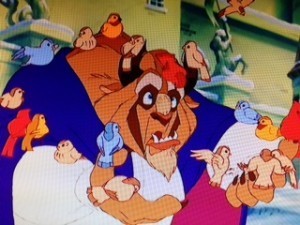
A Way With Animals
Description: People who have a way with animals are able to easily win animals over. They know how to approach, communicate with, and win the trust of animals that normally would shy away from humans. The people also are able to identify the physical and emotional problems that a given animal may have. In the other hand, animals instinctively recognize that these kinds of people can be trusted.
Beneficial Strengths or Abilities: having an affinity for nature, being comfortable being by oneself (since animals aren’t likely to approach a crowd of humans),
Character Traits Suited for this Skill or Talent: compassionate, observant, unselfish, perceptive, patient, calm, kind
Required Resources and Training: Spending time with and studying certain animals can lead to a better understanding of how they function individually, their group dynamics, and their overall tendencies. Studying their biology and physiology can give someone the knowledge necessary to help them from a medical standpoint. There are also real people with this knack; working closely with them may give someone valuable information into the process of understanding animals and gaining their trust.
Associated Stereotypes and Perceptions: Princesses and fantasy heroines most often have this skill, without any explanation ever being offered as to why. To break the stereotype, consider giving this skill to a male character, or an adult rather than a child. Maybe the gift applies to certain species or kinds of animals, or is limited to a geographic or temporal location. And giving a reason for the character’s extraordinary gift might aid in making it more believable for readers and giving it a new spin.
Scenarios Where this Skill Might be Useful:
when a favored animal (the king’s stallion, the witch-woman’s familiar, a child’s pet) is sick, injured, or under-achieving
a rural setting where animals are plenty and people are scarce
a scenario where animals are needed to resolve the main conflict
when the animals know important information that the hero doesn’t
in a futuristic/dystopian setting where animals rule and humans are subjugated
Resources for Further Information:
7 Amazing Wild Animal Whisperers
You can brainstorm other possible Skills and Talents your characters might have by checking out our FULL LIST of this Thesaurus Collection. And for more descriptive help for Setting, Symbolism, Character Traits, Physical Attributes, Emotions, Weather and more, check out our Thesaurus Collections page.
The post Talents and Skills Thesaurus Entry: A Way with Animals appeared first on WRITERS HELPING WRITERS.
June 16, 2014
Book Cover Copycats: Is It Flattery or Copyright Infringement?
A while back, a reader of our book, The Emotion Thesaurus: A Writer’s Guide to Character Expression , sent me an interesting email. In it, she explained that during her Amazon travels she discovered a book that was a lot like ours. In fact, it was almost a carbon copy. I followed the link, and what I found left me gobsmacked.
, sent me an interesting email. In it, she explained that during her Amazon travels she discovered a book that was a lot like ours. In fact, it was almost a carbon copy. I followed the link, and what I found left me gobsmacked.
Looks familiar, doesn’t it?
For me, the shock was double. First, that someone would mimic our cover, right down to the color scheme, and secondly, that they would also call their book a “Thesaurus.” To me, these two things together pointed in one direction…the authors were trying to piggyback our book, perhaps in hopes that some of our fans would buy their product, mistakenly thinking it was actually part of our bestselling series.
The idea that people could be taken in by this made me feel sick. The first thing I had to do was get a copy of the book to see inside it. A copied cover was one thing, but if our book content was also being used, that would be catastrophic. The book was on a free promotion, so I downloaded it.
Thankfully the content had nothing to do with our books. But what it was (a set of simple internet marketing term definitions for things like “HTML” and “Blog” without any teaching content or advice whatsoever) didn’t make it feel like a book (and certainly not a thesaurus!) This, combined with a lengthy legal disclaimer at the start of the book (perhaps a measure taken in case buyers were not happy with the value?), left me with the feeling that this could be a “trying to make a quick buck” situation.
The last thing I wanted was for anyone to think this book was associated with us. Becca quickly emailed Writer’s Beware, who advised us to contact Amazon directly as they were cracking down on “non-books” and could remove it from sale if it fell under copyright infringement. (I emailed our cover designer, Scarlett Rugers, who assured us that the design was ours alone, and we owned the copyright.)
We contacted Amazon and while we waited for a response, I started looking into the authors, hoping to reach them to ask about their intentions. Two authors were listed in the book, while only one was listed on the cover. Every lead I followed turned into smoke. No websites, no amazon author profiles. The publisher had no website either, and a few other books tied to them (things like blank recipe and address books) were uploaded around the same time. The authors of these “books” also had no online presences or websites. I couldn’t help but wonder if they might be pseudonyms, in case one book was taken down the others would be unaffected.
I went to the Kindle boards community to see if they had any idea how to track down the authors of this book. They are such a great group of people, and offered me lots of ideas on how to track him down, in case Amazon refused to pull the book on their end.
The full discussion is here if anyone wants to read it. If you are running up against a situation regarding copyright, it’s worth reading and accessing links. Interestingly, the issue became somewhat of a debate. People were divided…was this a form of copyright infringement, or not? Cover similarities are seen all the time after all, even in traditional publishing. Of course, sometimes this can get publishers into deep trouble. So was this a situation where there was little we could do? Or, perhaps we should even feel “flattered” someone recognized our book’s popularity and sought to emulate it?
I know how Becca and I felt about it. The guy called it a Thesaurus for one. And he didn’t just take inspiration from our cover, he copied it to the best of his ability. There are subtle differences obviously, but it was clear (we felt) this was a case of someone trying to misuse our trusted brand.
Luckily, my local SCBWI hosted a workshop right around this time on Intellectual Copyright Law, led by a IC lawyer. (I’ll mention straight out that I live in Canada, and international interpretation of law will vary.)
He discussed a few things: Branding, Copyright, and Trademark. Here are some loose definitions based on my notes:
Trademark: a mark that legally represents something, often a business, by their goods or services.
Branding: distinguishing your product from those of your competitors. When a consumer sees your branding (colors, words or phrases, etc.) or logo, they associate it with your product.
Copyright: exclusive rights granted to the originator of intellectual property to use and distribute.
Businesses are constantly attempting to divert consumer attention from an established brand to their own products by adopting a similar look. If a person could be legitimately confused and assume the logo or brand was the same, then you have a case for breaking copyright.
So when is someone taking the work of another without permission (to use, distribute or to create derivative works), classified as copyright infringement?
The lawyer said that the test for this is not how much of the finished work is unique, but instead how much was taken from someone else. Could a consumer become legitimately confused (as mentioned above)?
One case the lawyer brought up was an author who pitched a TV cartoon to producers but was turned down. A year later, the TV station launched a cartoon that was eerily similar to what he pitched (the series plot scenario, some distinctive characters, etc.) The author went after them, and while the producers argued that there were unique elements that were completely different than what the author pitched (an additional sidekick character, a special talent for the main character that was not in the author’s version, etc.) the court ruled in favor of the author. They felt there was enough similar to his proposed series to classify as infringement.
When I showed the lawyer the cover of The Emotion Thesaurus, and then The Positive Trait and Negative Trait Thesaurus books, and then the copied Internet Marketing cover, he said in my case, the infringement falls under “Distinguishing Guise.” This means that the “look” of our books are the same, and contribute to our established brand.
As you can see, our books are very similar, built to be recognizable. Readers who see our covers associate the look of each with our brand. Therefore, trying to imitate our covers in this way is infringing on our copyright.
Luckily for us, Amazon agreed with out assessment of copyright infringement, and after filling out a legal declaration that we were the copyright holders, they removed the other book from their sites. Hopefully no one was taken in by the copied look, thinking it was somehow associated with us.
I wanted to share this story in case it might help someone else. Please Note: I’m not dispensing legal advice, simply relaying my own experience and memory of what was discussed at the workshop.
Authors work hard at creating a brand for themselves. Protect yours. If you are an author and having a unique cover is important to you, make sure that the artist you’re working with has no plans of reselling the cover design to others. And remember that copyright is easier to prove if it has been registered.
A huge thank you to everyone who helped us work through this situation, and to all of you wonderful readers who watch out for us. We are so privileged that you have our backs.
Have you run into copyright infringement? Have any insight you can add? Please let us know in the comments!
The post Book Cover Copycats: Is It Flattery or Copyright Infringement? appeared first on WRITERS HELPING WRITERS.
June 13, 2014
Writer Dads ROCK: Nominate a Writer-Dad in our Father’s Day Contest!
Father’s Day is coming! And what better way to celebrate than to hold a contest for all the fabulous DADS out there who work, raise families and pen magnificent stories, juggling their passions to do it all.
 How many writer-dads do you know through social media and face-to-face writing events? A ton I bet. One of my favorite Writer-dads is Matthew MacNish of QQQE. That man is a champion of YA literature, a query-wrangler, is always helping other writers and is a terrific dad to boot! Then there’s Jay Donovan of TechSurgeons who is planning a guide book, is a beta reader, a techno guru of epic proportions helping writers everywhere AND makes his kids loads of homemade lava cakes. Heroes, these two, along with a million more out there!
How many writer-dads do you know through social media and face-to-face writing events? A ton I bet. One of my favorite Writer-dads is Matthew MacNish of QQQE. That man is a champion of YA literature, a query-wrangler, is always helping other writers and is a terrific dad to boot! Then there’s Jay Donovan of TechSurgeons who is planning a guide book, is a beta reader, a techno guru of epic proportions helping writers everywhere AND makes his kids loads of homemade lava cakes. Heroes, these two, along with a million more out there!
Bottom line here? We love dads! You love dads! So let’s band together and celebrate some of the very special dads we all know in the writing community!
TELL US ABOUT A WRITER DAD YOU KNOW, AND MAYBE WIN THEM A FEW BOOKS!
Up for grabs? One 3-pack of writerly goodness:
The Emotion Thesaurus (winner’s choice, print or digital*)
The Positive Trait Thesaurus (winner’s choice, print or digital*)
The Negative Trait Thesaurus (winner’s choice, print or digital*)
(*Print copies are available inside the US, digital only outside the US)
So tell us…
Know a Writer Dad & want the world to know how awesome they are?
Just post a comment below, nominating them for this prize! If they have a blog or twitter, link to it so people can visit. But most of all, tell us why YOU care about this person, and what makes them so awesome! (And please, let them know about this contest so they can come and read all the nice things you wrote about them!)
**Contest is now closed* A HUGE congratulations to Kimbra, who nominated Douglas Deane as her writer-dad pick!
Nominate as many writer-dads as you like, just create a separate comment for each to make it easier for us to draw for a winner. Good luck!
The post Writer Dads ROCK: Nominate a Writer-Dad in our Father’s Day Contest! appeared first on WRITERS HELPING WRITERS.
June 11, 2014
Story Midpoint & Mirror Moment: Using Heroes’ Emotions To Transform Them
I recently read a Huff Post psychology piece on Turning Negative Emotions Into Your Greatest Advantage and immediately saw how this could also apply to our characters. Feel free to follow the link and read, but if you’re short on time, the rundown is this: negative emotions are not all bad. In fact, they are necessary to the human experience, and can spark a shift that leads to self growth.
And after reading James Scott Bell’s Write Your Novel From The Middle: A New Approach for Plotters, Pantsers and Everyone in Between and attending a full day workshop with him a few weeks ago, I can also see how this idea of using negative emotions to fuel a positive changes fits oh-so-nicely with Jim’s concept of “the Mirror Moment.”
and attending a full day workshop with him a few weeks ago, I can also see how this idea of using negative emotions to fuel a positive changes fits oh-so-nicely with Jim’s concept of “the Mirror Moment.”
But I’m getting ahead of myself. First, let’s look at what a mirror moment is.
 Mirror Moment: a moment in midpoint scene of a novel or screenplay when the character is forced to look within and reflect on who he is and who he must become in order to achieve his goal. If he decides to continue on as he always has, he will surely fail (tragedy).
Mirror Moment: a moment in midpoint scene of a novel or screenplay when the character is forced to look within and reflect on who he is and who he must become in order to achieve his goal. If he decides to continue on as he always has, he will surely fail (tragedy).
If the story is not a tragedy, the hero realizes he must either a) become stronger to overcome the odds or b) transform, shedding his biggest flaws and become more open-minded to new ideas and beliefs. One way or the other, he must better himself in some way to step onto the path which will lead to success.
Jim actually describes the Mirror Moment so much better than I can HERE, but do your writing a BIG FAVOR and also snag a copy of this book. (It’s a short read and will absolutely help you strengthen the character’s arc in your story!)
To see how the two tie together, let’s explore what leads to this essential “mirror moment.” Your hero is taking stock of his situation, realizing he has two choices: stubbornly continue on unchanged and hope for the best, or move forward differently, becoming something more.
The big question: what is the catalyst? What causes him to take stock of the situation? What causes his self-reflection?
The answer is not surprising: EMOTION. Something the character FEELS causes him to stop, look within, and make a choice.
Let’s assume this isn’t a tragedy. If this moment had a math formula, it would look something like this:
Emotion + look within = change
So what type of emotions are the best fit to encourage this necessary shift toward change? And are they positive emotions, or negative ones? Let’s experiment!
Common positive emotions, taken right from The Emotion Thesaurus:
Happiness + look within
Happiness is contentment, a feeling of extreme well being. If one feels good about themselves and where they are at, it doesn’t encourage a strong desire for change, does it?
Gratitude + a look within
 Gratitude is thankfulness, an appreciation for others and what one has. Because again, gratitude creates contentment, feeling “full” and thankful, it doesn’t make the best catalyst for change. However, if you were to pair it with something like relief (such as being given a second chance), then gratitude over being spared something negative could lead to resolving to change.
Gratitude is thankfulness, an appreciation for others and what one has. Because again, gratitude creates contentment, feeling “full” and thankful, it doesn’t make the best catalyst for change. However, if you were to pair it with something like relief (such as being given a second chance), then gratitude over being spared something negative could lead to resolving to change.
Excitement + a look within
Excitement is the feeling of being energized to the point one feels compelled to act. On the outside, this looks like a good candidate for change, but it depends on the type of excitement. Is the “high” a character feels something that distracts them from self reflection (such as being caught up in the experience of a rock concert) or does it inspire (such as the thrill of meeting one’s sports hero in person)? If one’s excitement propels one to want to become something better, then change can be achieved.
Satisfaction + a look within
Satisfaction is a feeling of contentment in a nutshell. It is feeling whole and complete. As such, looking within while satisfied likely won’t lead to a desire to change anything–in fact it might do just the opposite: encourage the character to remain the same.
Common negative emotions, again right from The Emotion Thesaurus:
Fear + a look within
Fear is the expectation of threat or danger. Feeling afraid is very uncomfortable, something almost all people wish to avoid. Some even try to make deals with the powers that be, so deep is their desperation: if I win this hand, I’ll give up gambling, I swear. So, combining this emotion with some self reflection could definitely create the desire to change.
Frustration + a look within
 Feeling stymied or hemmed in is something all people are familiar with and few can tolerate for long. By its very nature, frustration sends the brain on a search for change: how can I fix this? How can I become better/more skilled/adapt? How can I succeed?
Feeling stymied or hemmed in is something all people are familiar with and few can tolerate for long. By its very nature, frustration sends the brain on a search for change: how can I fix this? How can I become better/more skilled/adapt? How can I succeed?
Characters who are frustrated are eager to look within for answers.
Embarrassment + a look within
Embarrassment is another emotion that is very adept at making characters uncomfortable. Self-conscious discomfort is something all usually avoid because it triggers vulnerability. When one feels embarrassed, it is easy to look within and feel the desire to make a change so this experience is not repeated.
Shame + a look within
Disgrace isn’t pretty. When a person knows they have done something improper or dishonorable, it hurts. Shame creates the desire to rewind the clock so one can make a different choice or decision that does not lead to this same situation. It allows the character to focus on their shortcomings without rose-colored glasses, and fast tracks a deep need for change.
* ~ * ~ *
These are only a sampling of emotions, but the exercise above suggests it might be easier to bring about this mirror moment through negative emotions. But, does this mean all positive emotions don’t lead to change while all negative ones do? Not at all!
Love + a look within could create a desire to become more worthy in the eyes of loved ones. And emotions such as Denial or Contempt, while negative, both resist the idea of change. Denial + a look within, simply because one is not yet in a place where they can see truth. Contempt + a look within, because one is focused on the faults of others, not on one’s own possible shortcomings. Overall however, negative emotions seem to be the ones best suited to lead to that mirror moment and epiphany that one must change or become stronger and more skilled in order to succeed.
 So there you have it–when you’re working on this critical moment in your story when your character realizes change is needed, think carefully about which emotion might best lead to this necessary internal reflection and change.
So there you have it–when you’re working on this critical moment in your story when your character realizes change is needed, think carefully about which emotion might best lead to this necessary internal reflection and change.
(And of course, we profile 75 emotions in The Emotion Thesaurus: a Writer’s Guide to Character Expression, so that’s just one more way for you to use it!)
photo credit 1: Dhinal Chheda via photopin cc
photo credit 2: nowhere Zen New Jersey via photopin cc
photo credit 3: stephcarter via photopin cc
The post Story Midpoint & Mirror Moment: Using Heroes’ Emotions To Transform Them appeared first on WRITERS HELPING WRITERS.
June 7, 2014
Character Talent & Skills: High Pain Tolerance
As writers, we want to make our characters as unique and interesting as possible. One way to do this is to give your character a special skill or talent that sets him apart from other people. This might be something small, like having a green thumb or being good with animals, to a larger and more competitive talent like stock car racing or being an award-winning film producer.
 When choosing a talent or skill, think about the personality of your character, his range of experiences and who his role models might have been. Some talents might be genetically imparted while others are created through exposure (such as a character talented at fixing watches from growing up in his father’s watch shop) or grow out of interest (archery, wakeboarding, or magic). Don’t be afraid to be creative and make sure the skill or talent is something that works with the scope of the story.
When choosing a talent or skill, think about the personality of your character, his range of experiences and who his role models might have been. Some talents might be genetically imparted while others are created through exposure (such as a character talented at fixing watches from growing up in his father’s watch shop) or grow out of interest (archery, wakeboarding, or magic). Don’t be afraid to be creative and make sure the skill or talent is something that works with the scope of the story.
High Pain Tolerance
Description: the ability to suppress pain and keep going is nothing short of heroic, and in many circumstances, is necessary for survival. Pain from injuries can fog the mind and break the body, so developing a high tolerance level for it can greatly enhance one’s performance and endurance in most situations.
Beneficial Strengths or Abilities:
A strong, fit body, mental acuity, commitment to the current action, belief in oneself, strength of will, a strong need that surpasses all else, being able to visualize the goal and use it to strengthen one’s resolve, etc.
Character Traits Suited for this Skill or Talent:
Determination, intrepid, observant, knowledgeable, energetic, relentless, disciplined, courageous, balanced, protective, resilient, dedicated
Required Resources and Training:
While there can be a genetic component to having a high pain tolerance, much relies on the ability to focus on what’s important and set aside all distraction. Meditation can be key to achieving the state of “mind over matter” required to rise above pain and focus on the goal.
Conditioning is another way to increase one’s ability to push aside distractions, such as the rigorous physical and mental training–regular exposure to stress and pain–marines go through. That said, pain exposure therapy can have the opposite effect for some people.
Having good cardio and general physical fitness also greatly helps, but the mental aspect is just as (if not more) important. Stress level management skills, dedication, a deep need or desire and belief in oneself are key. Positive thinking and visualizing a satisfying outcome can also help one push through difficult times.
Scenarios Where this Skill Might be Useful:
Athletic competitions and races
Survival situations (being lost in the wilderness, caught in a mine collapse, suffering from heat or cold exposure, etc.)
War
Being tortured
Being taken, hunted or trying to escape (the law, serial killer, kidnappings, etc.)
Abusive situations
High stake situations where others are counting on one’s efforts (desperately needed monetary compensation, a life and death event, etc.)
Childbirth
Emergency medical treatment when proper equipment or medicines might not be available
Fighting illness
Resources for Further Information:
Heal Thyself: Mind Over Matter
You can brainstorm other possible Skills and Talents your characters might have by checking out our FULL LIST of this Thesaurus Collection. And for more descriptive help for Setting, Symbolism, Character Traits, Physical Attributes, Emotions, Weather and more, check out our Thesaurus Collections page.
photo credit: cogdogblog via photopin cc
The post Character Talent & Skills: High Pain Tolerance appeared first on WRITERS HELPING WRITERS.
June 3, 2014
Lessons From James Scott Bell: Characters That Jump Off The Page
A week (ish) ago, I had the pleasure of attending a workshop with bestselling author and writing coach, James Scott Bell. It was a fantastic day of learning how to look deep inside our characters to understand what made them tick, and how structure can lay the framework for a compelling internal arc.
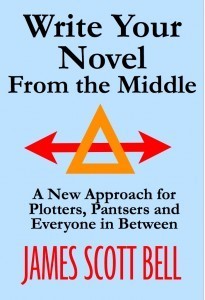 The day left my brain bursting, and very excited to look back into my novels to discover the “mirror moment” something that Jim discusses in his new book, Write Your Novel From The Middle: A New Approach for Plotters, Pantsers and Everyone in Between
The day left my brain bursting, and very excited to look back into my novels to discover the “mirror moment” something that Jim discusses in his new book, Write Your Novel From The Middle: A New Approach for Plotters, Pantsers and Everyone in Between .
.
The mirror moment is at the midpoint of the story where the character is faced with these questions: who am I? What have I become? And, who must I become to continue? This is the point where the hero is weighed down by his situation and has a moment of internal reflection. He sees that the odds are too great and he must grow stronger to succeed, or that who he is now is holding him back and to move forward he must transform, leaving his old self behind. (It’s a short book, but one you absolutely should add to your collection. Click on the link and come back…trust me. Go on, I’ll wait.)
Back? Awesome!
Another thing he left us with was a neat checklist of what can make a character leap off the page. I thought I’d share it here.
Originality
Characters who are original in some way–a unique blend of character traits, a witty sense of humor, interests or a job that is unusual, a vibrant outlook or attitude–make the reader want to get to know them, and see inside their inner world. Strive to provide a character that is unexpected and fresh.
Unpredictability
Readers are engaged by characters who do not always act in a predictable way. Think of how to have your character make decisions or respond in ways the reader won’t see coming. The easiest way to do this is by looking at the situation and decide what most would do. Then, brainstorm a list of other things your hero might do. Get as crazy as you like, and then read through your ideas until you hit on the perfect match.
Desire
Every character should have something they yearn for, something they want deeply for themselves. Readers identify with wanting such a strong desire or need. Make it meaningful and important to the character, and it will become meaningful and important to the reader as well.
Wounds
All characters should have a back story wound, an emotional hurt that still affects them today. Emotional pain is compelling, deepening a character as well as humanizing them. Look for ways to show that pain in the present, symbolized in the setting and events, acting as reminders of the past. (Need some help figuring out your hero’s Emotional Wound? Check out our handy list of Common Themes for Emotional Wounds.)
Passion
A protagonist that feels passionately about something (his role, his goals, his beliefs) is able to form a powerful connection with readers. Don’t be afraid to show a character’s passion.
Complexity
There’s something compelling about a character who has opposing needs or desires, and who experiences conflicted emotions at turning points in the story. This “pull” in different directions creates inner turmoil and complexity that will draw readers in.
Resourcefulness
Characters who have special talents and skills (hey, there’s a thesaurus for that!) can be resourceful, helping them get out of a tight spot or solve problems in a unique way. This elevates them to readers, making them more interesting and likable! Don’t be afraid to think outside the box when it comes to talents or skills that can turn your character from ordinary to extraordinary.
Gutsy
Walking the walk, talking the talk. Characterization happens not through telling, but showing, especially when a character is faced with a less-than-ideal situation. Showing them doing something even though they don’t want to do it is both gutsy and memorable.
Nobility
Having strong morals and beliefs and acting on them, even when it might be easier not to, earns admiration. Giving your character a noble purpose will win the hearts of readers.
~~ * * ~~
Jim stressed a character doesn’t need to have all of these of course, but choosing a few and fleshing out your character with some in mind will help you build a hero that readers can’t help but be drawn to.
Do your characters have some of these in their make up? What would you add to this list? Let me know in the comments!
The post Lessons From James Scott Bell: Characters That Jump Off The Page appeared first on WRITERS HELPING WRITERS.
October 21, 2013
FREE Writing Feedback During the WHW Amazing Race!
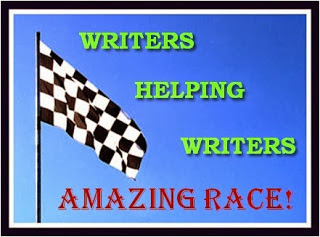
Writing is hard, isn't it? Create the perfect hook. Make your first page compelling. Craft an amazing 25 word pitch. Knock out a query that will blow an agent's mind. On and on it goes. And sometimes, well, you just wish someone would help.
WISH NO MORE!
From October 21st until October 27th, Writers Helping Writers is posting an OPEN CALL for writers. You can fill out a form, requesting help with critiques, book visibility, social media sharing, blog diagnostics, advice and more.
An army of Amazing Racers are standing by waiting to help with your submissions. How many people can we help in a week? Let's find out! Did I mention there are Celebrity Racers too--amazing authors and editors who know their way around a first page. Maybe one of them will pick your submission to help with!
Each day this week, there's an AMAZING giveaway, too. So stop in at Our new Writers Helping Writers website and find out how to take advantage of this unique, pay-it-forward event for writers. Becca and I will see you there!
Photo Credit: Tharrin

Writers Helping Writers
- Angela Ackerman's profile
- 1014 followers


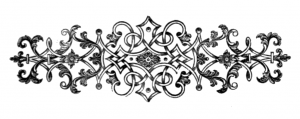

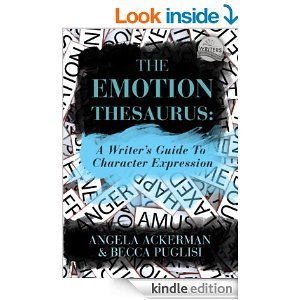
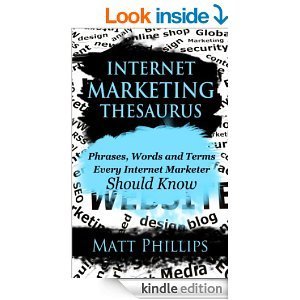
![Pageflex Persona [document: PRS0000046_00066]](https://i.gr-assets.com/images/S/compressed.photo.goodreads.com/hostedimages/1391759768i/8451074.jpg)


